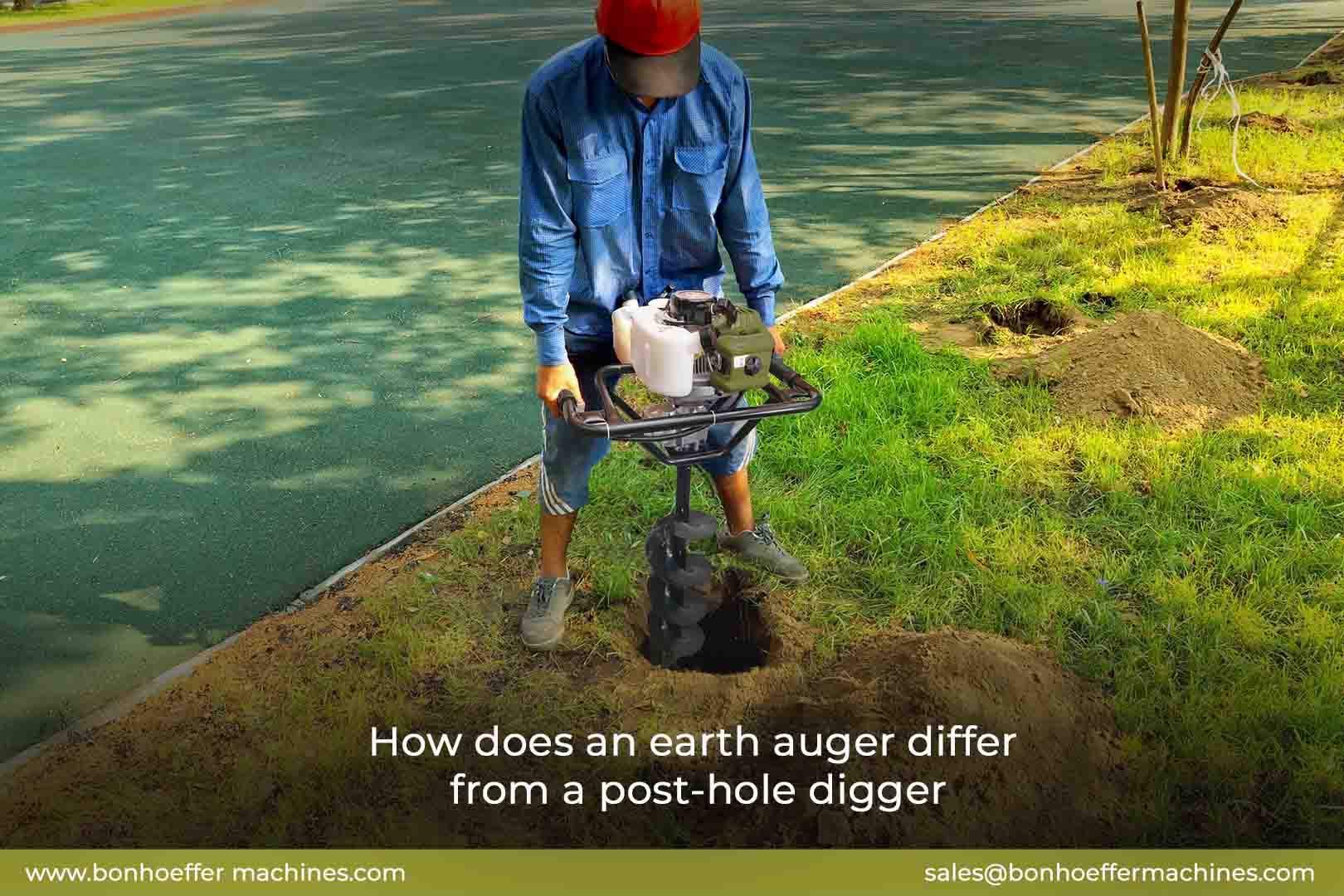
Earth augers and post-hole diggers are tools used for digging holes, but they differ significantly in design, functionality, and applications. Here’s a detailed comparison:
Design and Mechanism
| Earth Auger | Post Hole Digger | |
| Structure | Typically features a helical screw blade that rotates to drill into the ground. | Consists of two handles with blades at the end that are manually operated to scoop out soil. |
| Power Source | Can be powered by gas, electricity, or operated manually. | Generally, a manual tool, though there are powered versions available. |
| Functionality | Designed for quickly boring holes in various soil types, including hard and compacted ground. | Primarily used for digging narrow holes for fence posts or planting trees. It relies on the user’s strength to operate. |
Applications
- Earth Auger
- Suitable for a wide range of applications including planting trees, installing fencing, and drilling for utility poles.
- Effective in both residential landscaping and larger construction projects.
- Post Hole Digger
- Best suited for specific tasks such as digging holes for fence posts or planting small plants.
- More labor-intensive and less versatile than augers.
Efficiency
- Earth Auger
- Generally faster and more efficient due to its rotating mechanism, allowing it to penetrate hard soil more easily.
- Post Hole Digger
- Slower as it requires manual effort to dig and remove soil, making it less efficient for larger projects.
Conclusion
In summary, while both tools serve the purpose of digging holes, earth augers offer greater efficiency and versatility, making them ideal for various digging tasks. In contrast, post-hole diggers are more suited for specific applications requiring manual operation.






